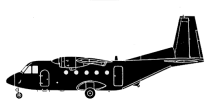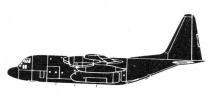Incident Overview

Description
One of the Swedish Coastguard aircraft, a CASA C-212 with call sign KBV585, took off at 11:09 from Ronneby-Kallinge Airport (RNB) for a routine maritime surveillance flight. The crew consisted of two pilots and two system operators. During the flight the crew received a message from the co-ordination centre concerning a request that had been received for a fly by over the Falsterbo canal, where the Swedish Coastguard has a base. The pilots accepted this and revised the final part of their flight plan so that a demonstration of the aircraft could be performed. At 13:23 KBV 585 came in over the coast at Falsterbonset on a north-northwesterly course along the canal. The aircraft then continued out over the sea and after a left turn returned to approach the base. The aircraft then performed another fly by at low speed over the base and along the canal in the opposite direction. Beyond the end of the canal the aircraft turned back to the left and flew for the last time towards the base. As the aircraft neared the base once more it made some wing tipping. After tipping its wings two or three times a loud bang was heard, and the entire left wing separated from the aircraft. The aircraft then rolled over on to its back and fell, along with the left wing, into the harbour basin, where it disintegrated on impact. All on board were killed. The technical examination showed that the cause of the wing separation was a fatigue fracture, about 84 cm long, which was present in the wing lower skin, where the wing was attached to the aircraft fuselage. The crack in the wing lower skin, which forms part of the wings load-bearing structure, meant that the strength of the wing was severely compromised. In connection with the wing tipping that was performed, momentary lift and mass forces were applied to the wing, which resulted in a final fracture in the left wing that bent upwards and separated from the aircraft fuselage. The same type of fatigue crack was found in a similar location in the right wing, but this was far less developed. The initiation and development of these left and right wing cracks were similar. The metallurgical examination showed that they had been initiated at an early stage, and that the fatigue cracks had grown for a long time without having been detected. The location of the cracks under doublers meant at they were not visible from the outside of the wing. SHK considers that the design of the wing attachment to the aircraft fuselage was unsuitable, since the fairings between the aircraft fuselage and wing can transmit vertical loads for which they are not intended. The design means that a considerable proportion of such loads can, in certain circumstances, be transferred to the lower wing skin in a band at right angles to the primary load path of the skin. The characteristics of the fatigue cracks that in the left wing resulted in wing separation are typical of Multiple Site Damage (MSD). The fatigue cracks could have come about as the result of residual stress in the wing lower skin, that could have existed since the wing was manufactured or that arose due to some momentary overload while in service. Nothing in the investigation indicates so, although this possibility cannot be excluded. SHK considers, however, that it is more likely that the fatigue cracks arose during normal flight operations in combination with some form of additional vibration and/or oscillating loads at some period of time in the history of the accident aircraft. The damage sequence had progressed over a long time, and some form of combination of the above factors cannot be excluded. It is the assessment of SHK that the manufacturer underestimated the material stress and the risk of crack formation in that particular area, and thereby overestimated the fatigue strength of the wings. The maintenance system that the manufacturer has prepared for this type of aircraft, and that SHK understands was complied by the maintenance organisation, was not able to detect and prescribe relevant measures to prevent the growth of these particular fatigue cracks. Nor did the manufacturer utilise the possibility of using the accident aircraft, which was the operating time leader in respect of coastguard flying operations, for crack growth inspection, as a sample, with the intention of identifying possibly critical areas concerning fatigue cracks. After this accident, the manufacturer and authorities prescribed special inspections of the affected areas in the wings, in respect of fatigue cracks. About 1/3 of the aircraft of this type in service have so far been reported as inspected, without finding any similar cracks. The operations of the Swedish Coastguard have sometimes subjected the flight equipment to high loads, but the operations have, in the opinion of SHK, taken place within the permitted limits for this type of aircraft. The demonstration flight along the Falsterbo canal took place with a deviation from the applicable internal rules and without operational instructions. CAUSES OF THE ACCIDENT: “The accident was caused by an inadequate maintenance system in respect of inspections for fatigue cracks. Contributory to the crack formation has been an unsuitable design of the attachment of the wings to the aircraft fuselage.”
Primary Cause
Inadequate maintenance system for fatigue crack inspections, leading to an unsuitable design of the wing attachment to the aircraft fuselage.Inadequate maintenance system for fatigue crack inspections, leading to an unsuitable design of the wing attachment to the aircraft fuselage.Share on:





